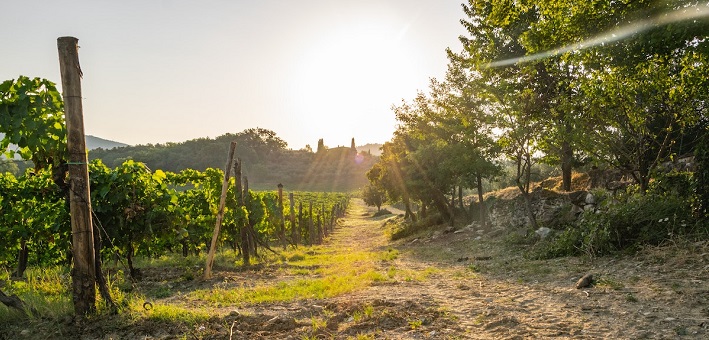Commentary on 2 Kings 2:1-2, 6-14
Two prophets journey together to the Jordan: the hard-bitten spiritual warrior who turned Israel from Baal back to Yahweh, and the prophet-in-waiting who will champion Yahweh’s supremacy over Israel and the surrounding nations. Their journey together takes the two to places that evoke deep associations with Israel’s past. They travel first to Gilgal, a shrine that marks two portentous beginnings, the united Israel’s crossing into the land Yahweh promised (Joshua 4:15-24) and the inauguration of the Israelite monarchy (1 Samuel 11:14-15). They then travel to Bethel, a royal sanctuary located near the southern border of the Northern Kingdom and a symbol of fractured Israel (1 Kings 12:26-33). A third stop at Jericho brings together the conflicted threads of Israel’s story to date. Jericho represents national unity, obedience to Yahweh, and Yahweh’s power and faithfulness (Joshua 3:1-6:20): Yet, Jericho also represents the arrogance of Israel’s kings, exemplified by the villainous Ahab, under whose reign the city was rebuilt, despite being cursed by Joshua (Joshua 6:26; see also 1 Kings 16:34). The journey ends at the Jordan River, a boundary region, a crossing place, and the site of transitions.
The symbolic architecture of the account reveals that there is more going on than a report about prophetic succession. The episode, in short, marks a pivotal moment that inaugurates a wide-ranging reordering of Israel’s life and faith. Elijah represents a past defined by Israel’s on-again, off-again loyalty to Yahweh, recently demonstrated by Jezebel’s war against Yahweh and his prophets, and by Ahab’s determination to wield royal power apart from the claims of God. Elisha represents a significantly-reconfigured future that, as yet, has only been glimpsed through Yahweh’s command that Elijah anoint Elisha as his prophetic successor, Jehu as the new king of Israel, and Hazael as the new king of Damascus.
The crossing from past to future occurs when Elijah is taken up in a whirlwind, leaving Elisha alone to step into the future that God is making. The moment is framed by two instances in which each prophet, respectively, strikes the Jordan with Elijah’s mantle, sees the water part, and then crosses the boundary. In the first instance, the narrator notes that Elijah and Elisha together cross “on dry ground” (verse 8). The phrase alludes powerfully to two other instances in which parting and crossing signified a profound transformation in the nation. At the Red Sea, the act of crossing transformed Israel from an enslaved nation under the dominion of Pharaoh to a liberated nation united by covenant to Yahweh. Likewise, the parting of the Jordan, when priests entered bearing the ark of the covenant at the direction of Joshua, changed wilderness Israel from a nomadic people roaming a trackless wilderness to a settled people inhabiting a land given by God.
The narrator tracks the transformation from Israel’s past to its future through the interaction of the two prophets and thus the worlds they represent. Elijah and Elisha together cross the Jordan from the west to the east and into the space associated with Elijah, who hails from Gilead in the Transjordan (1 Kings 17:1). Yet, only Elisha makes the crossing back to the west, his own space (Abel-meholah, in the west, probably near the Jordan valley). Two prophets cross the Jordan. One is taken up. One is left. With Elijah’s departure, the past he represents is closed. Elisha is left, and the future he represents begins when he strikes the water and asks pointedly, “Where is Yahweh, the God of Elijah?”
Where is God amidst the turbulence of change and transition? The narrator’s skillful rendering of this remarkable story draws contemporary readers into the in-between space of profound change and to ways to find our way through it.
First, the advent of the new does not necessarily entail the rejection or disappearance of the old, but rather its reconfiguration to meet the challenges of changed circumstances. The episode reinforces the continuity of past and future within the transitional moment. Elijah, the central prophetic voice of a soon-to-be bygone time, journeys to the Jordan with Elisha, who will speak God’s new word in a new time to a new people. Elijah intends to make a clean break by journeying to the Jordan alone. He repeatedly directs his protégé to stay put, but each time, Elisha refuses emphatically. Together at the Jordan, the last miraculous work of Elijah becomes the first miraculous work of Elisha; Elijah strikes the water before being taken up, and Elisha does the same afterward. The mantle itself symbolizes the continuity of God’s work in what has been and what will follow.
The incorporation of the past into the future, finally, is affirmed in the larger literary context. Elijah has left work undone, namely, the anointing of Hazael and Jehu, which will be Elisha’s to finish. And the fiery imagery associated with Elijah—the fire from heaven on Mount Carmel, the incineration of the king’s men, and his departure in the proverbial blaze of glory—makes a cameo appearance later in Elijah’s story (2 Kings 6:17).
Finally, the episode reminds faithful readers that God is present and active amidst profound change. Indeed, God has already gone ahead of the transitional moment and is making a way through it; Yahweh has spoken directly into the future by directing Elijah to authorize new political regimes (1 Kings 19:15-17). A new prophet has been called, mentored, and stands ready, ensuring that the prophetic voice that challenged Ahab and Jezebel will speak with redoubled power to future kings and future challenges. God’s mighty acts of power at the Jordan reveal that Yahweh is not detached or apprehensive as the old yields to the new. On the contrary, God continues purposely and actively through servants and agents, into a future only dimly glimpsed in the present.


June 26, 2022